3 Pitfalls Most Developers Fall Into When Using AI for Code, and How I Fix Them with Crevo

I’ve been talking with a few developer friends about AI-assisted programming lately, and I've noticed an interesting pattern: almost everyone is using AI to write code, but 80% of them are falling into the exact same traps.
These pitfalls don’t just fail to boost productivity; they actually make projects messier. Today, I want to talk about these three common traps and how I've started using a tool called Crevo to solve them.
Pitfall #1: Jumping Straight to Code Gen, Ending Up in a Tangled Mess
A typical scenario:
You have an idea and you tell ChatGPT: "Write the shopping cart feature for my e-commerce site."
The AI quickly generates a block of code that seems to work. You copy-paste it, find a few bugs, and ask the AI to fix them. After that, you realize it's not compatible with your existing codebase, so you ask for another revision. This cycle repeats, and half a day later, your feature is just a pile of patches.
The root of the problem:
The AI has no idea about your system architecture, tech stack, or business logic. It's just guessing based on your one-sentence prompt.
It's like hiring a construction crew without giving them a blueprint and just saying, "Build me a modern-style house." You can imagine how that’s going to turn out.
Pitfall #2: Ignoring System Design, Focusing Only on Snippets
A typical scenario:
Your product manager says, "Let's add Stripe payments."
You immediately ask an AI to generate the payment integration code, plug in the Stripe SDK, and it looks like you're done. But after going live, you discover:
- Webhook callbacks weren't handled properly, leading to lost orders.
- The database schema didn't account for refunds, so you're missing fields.
- There’s no idempotency check, causing customers to be double-charged.
The root of the problem:
An AI can generate code snippets, but it won't handle system-level architecture design or risk assessment for you. A complete payment feature involves business processes, data models, API design, error handling, and more. If you just stack AI-generated code without a system design document, you're heading for disaster.
Pitfall #3: Relying on Tribal Knowledge, Leaving Documentation Gaps
A typical scenario:
You're halfway through a project when a new developer joins the team. You spend thirty minutes explaining the business logic, but they're still completely lost.
There's no PRD, no architecture diagram, and no API documentation. All the critical information is in your head. The new hire has to guess by reading the code—and when they guess wrong, they code wrong, leading to rework.
The root of the problem:
AI can generate code, but it won't automatically create the comprehensive design docs and collaboration infrastructure your team needs. Software engineering is a team sport, not an act of individual heroism. Without documentation as a "common language," team efficiency plummets.
The Solution: Design First, Then Let the AI Generate Code on Rails
After hitting these walls, I started to reflect. The problem with AI-generated code is fundamentally a lack of a "design-first" approach.
So I started experimenting with a new workflow:
- First, use AI to generate a complete set of design documents (user stories, PRD, architecture, APIs, etc.).
- Then, use those documents to guide the AI in generating the code.
That's when I discovered Crevo, a tool that fit my new workflow perfectly.
What is Crevo? Generating 7 Types of Pro-Level Docs from a Conversation
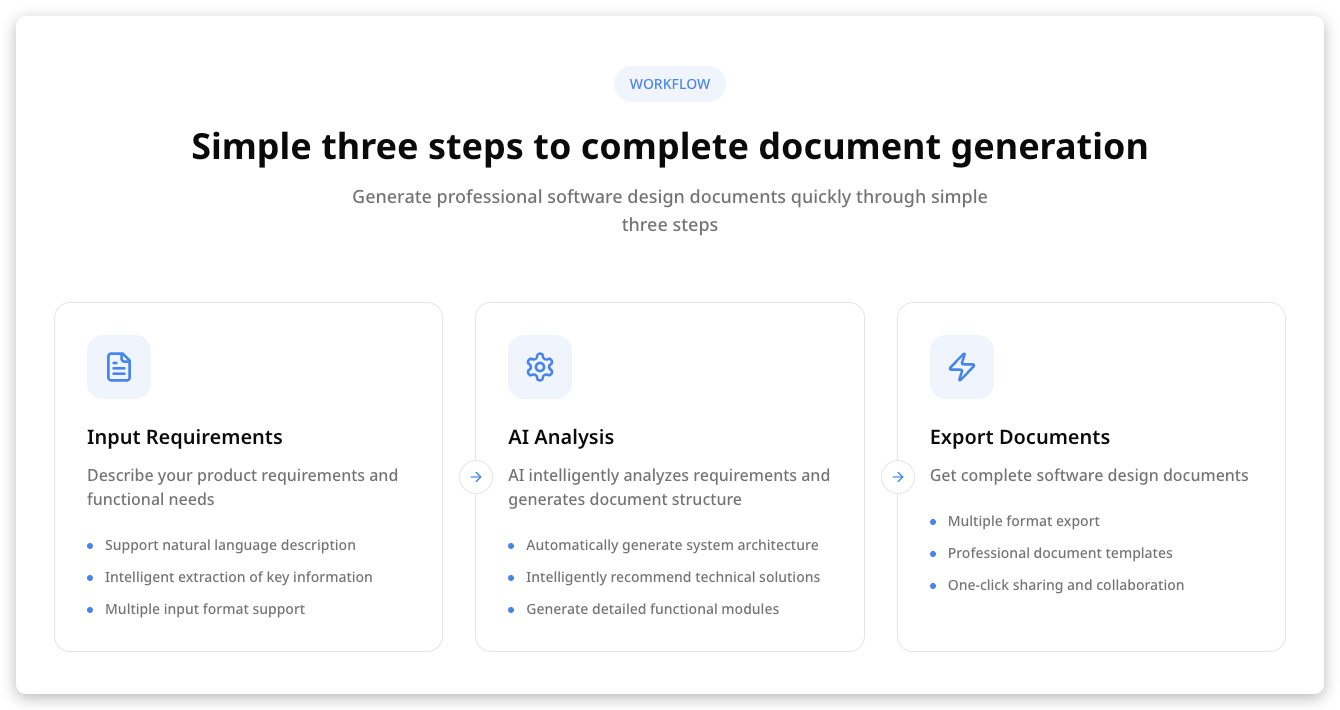
Crevo is an AI documentation service built on the Model Context Protocol (MCP), specifically designed to solve the "missing documentation" problem.
Core Capabilities:
- 🤖 Conversational Generation: Just describe your product, and the AI automatically generates 7 types of professional documents.
- 📋 Full-Cycle Coverage: User Stories → PRD → Architecture Design → Business Process → API Design → Database Design → Development Plan.
- 🔗 Context-Aware Consistency: The output from one step becomes the input for the next, ensuring logical consistency.
- 🛠️ Seamless Integration: Built on the MCP protocol, it can be used directly within Claude Desktop.
A Real-World Example: Refactoring My SaaS Project with Crevo
Let me show you the power of Crevo with a real use case.
Scenario: Adding a "Team Collaboration" feature to my SaaS platform.
The Old Way (The Pitfall Way):
- Jump straight to asking an AI to write the code.
- Realize it's incompatible with the existing permissions system.
- Modify the code, then modify it again, trapped in an endless loop.
- End up with a mess of code that even I'm afraid to touch.
The Crevo Way:
Step 1: Generate User Stories
I told the Crevo chatbot:
"I want to add team collaboration features to my SaaS platform. Users should be able to create workspaces, invite team members with different roles (admin, editor, viewer), and manage permissions for shared resources."
Crevo automatically generated a detailed user story document, including:
- User role definitions (Workspace Owner, Admin, Editor, Viewer).
- A list of user stories (create workspace, invite members, assign roles, manage permissions, etc.).
- A feature list with priorities.
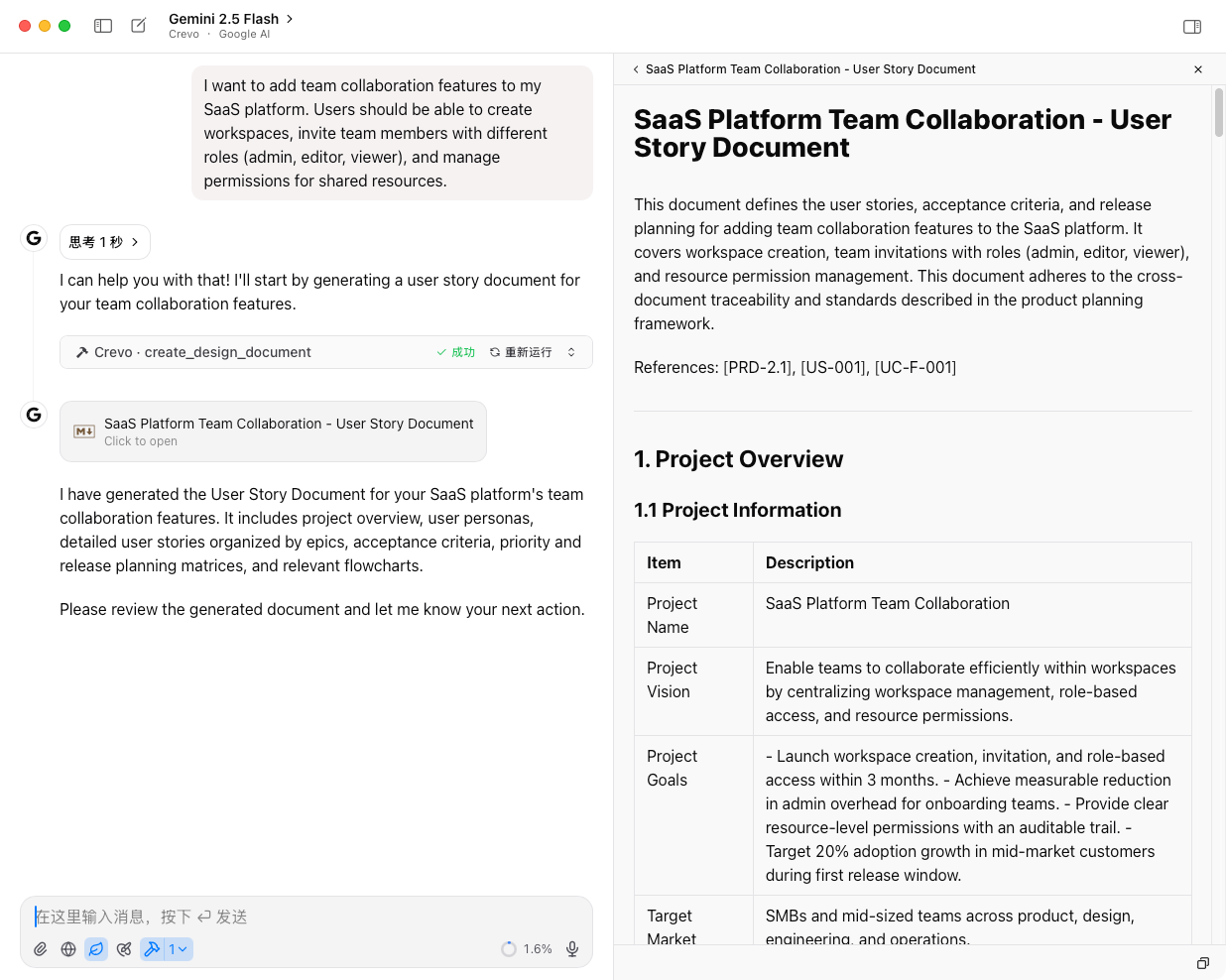
Step 2: Generate the PRD
Continuing the conversation, Crevo generated a complete Product Requirements Document (PRD):
- Product overview and core value.
- Detailed functional requirements (workspace management, invitation flow, role permission matrix, resource sharing).
- Non-functional requirements (performance, security, concurrency).
- Constraints (tech stack, compliance like GDPR).
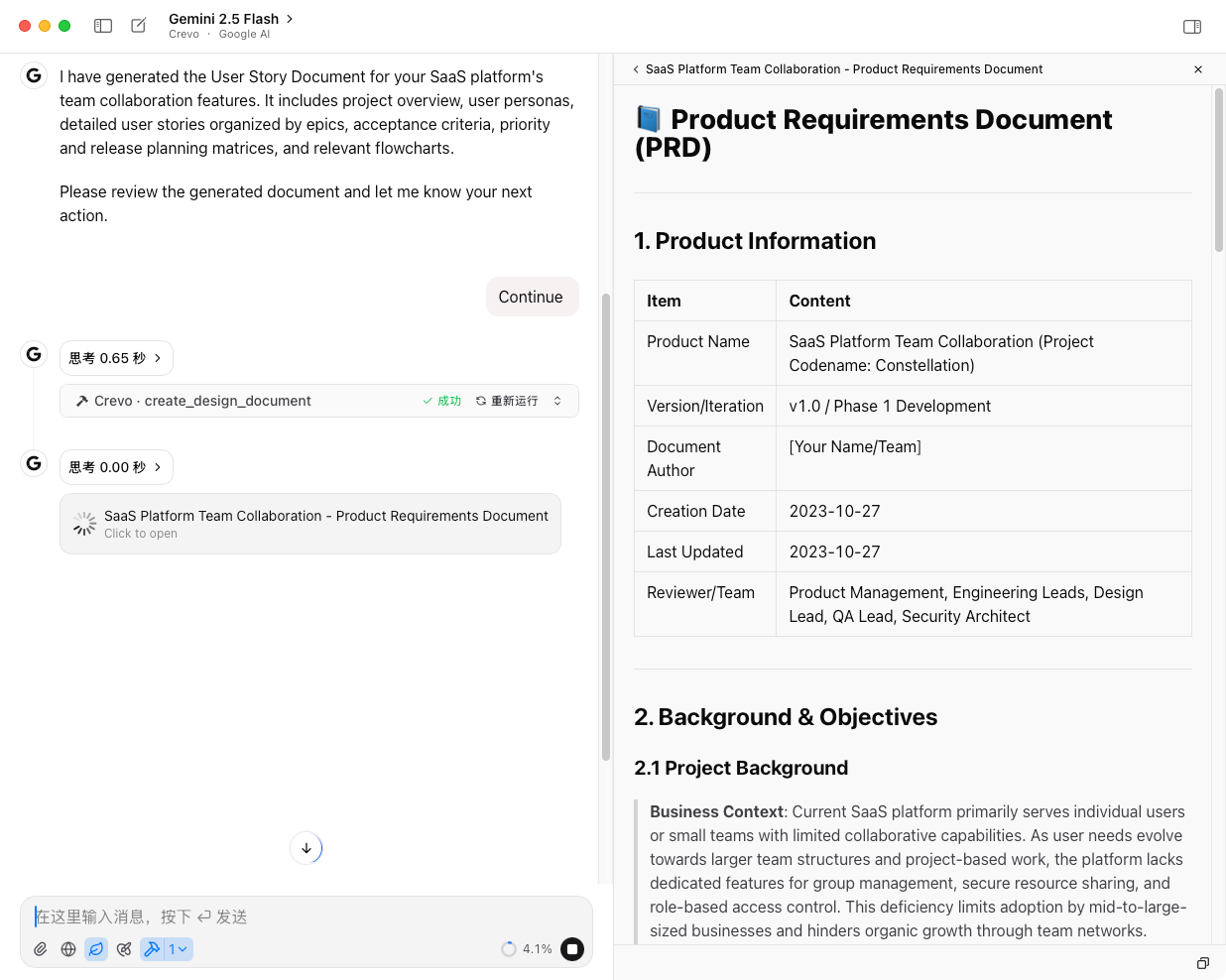
Step 3: Generate the System Architecture Design
Next, Crevo produced an architecture design document that defined:
- Tech stack choices (backend framework, database, caching).
- System layers (API, Business, Data).
- Core component designs (permissions engine, workspace service, invitation service, notification service).
- Key flow descriptions (permission checks, member invites, role changes).
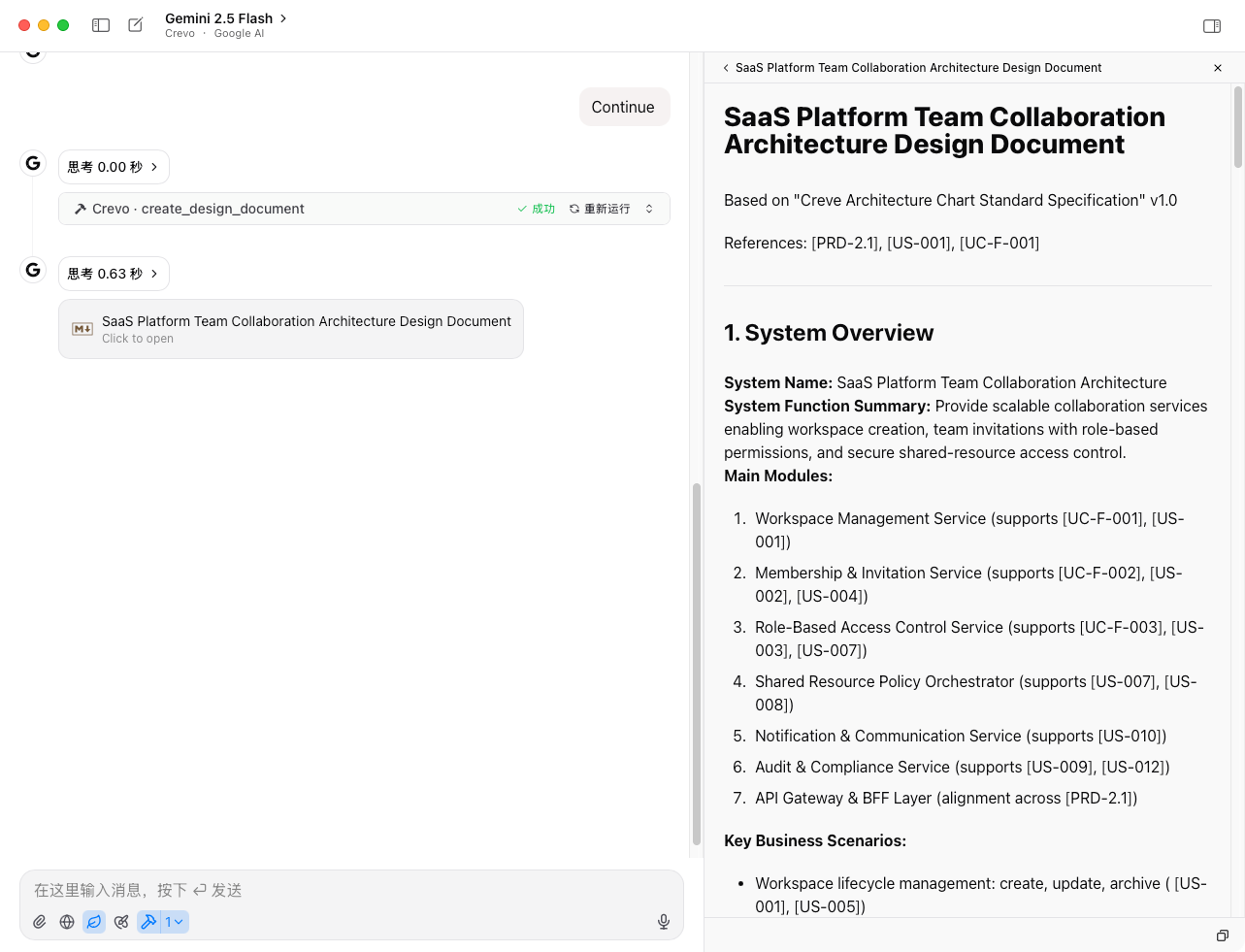
Step 4: Generate the Business Process Design
Crevo then generated detailed business process diagrams and state machines for all key flows.
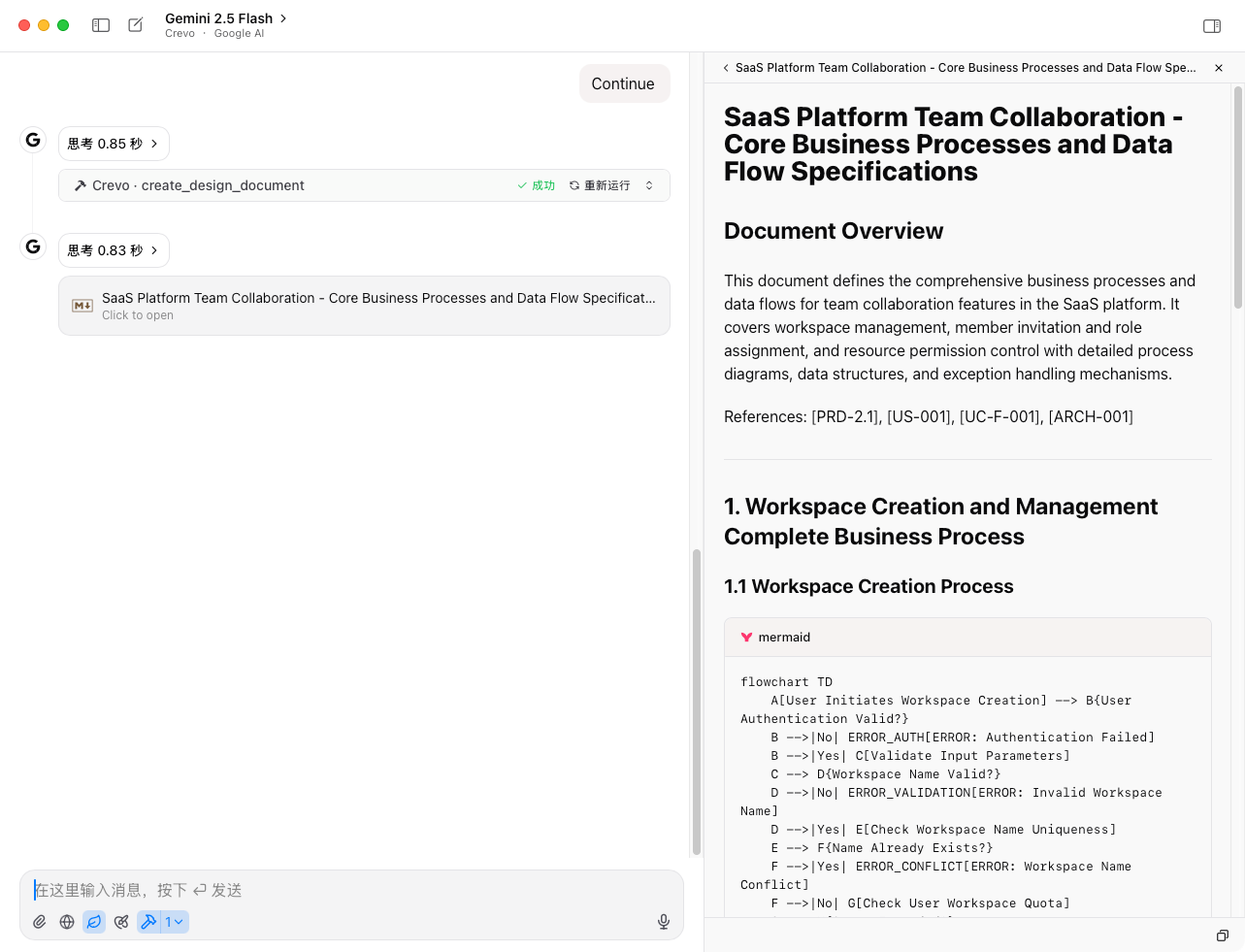
Step 5: Generate the Database Design
From there, Crevo generated a complete data model, including table schemas, field definitions, and relationships.
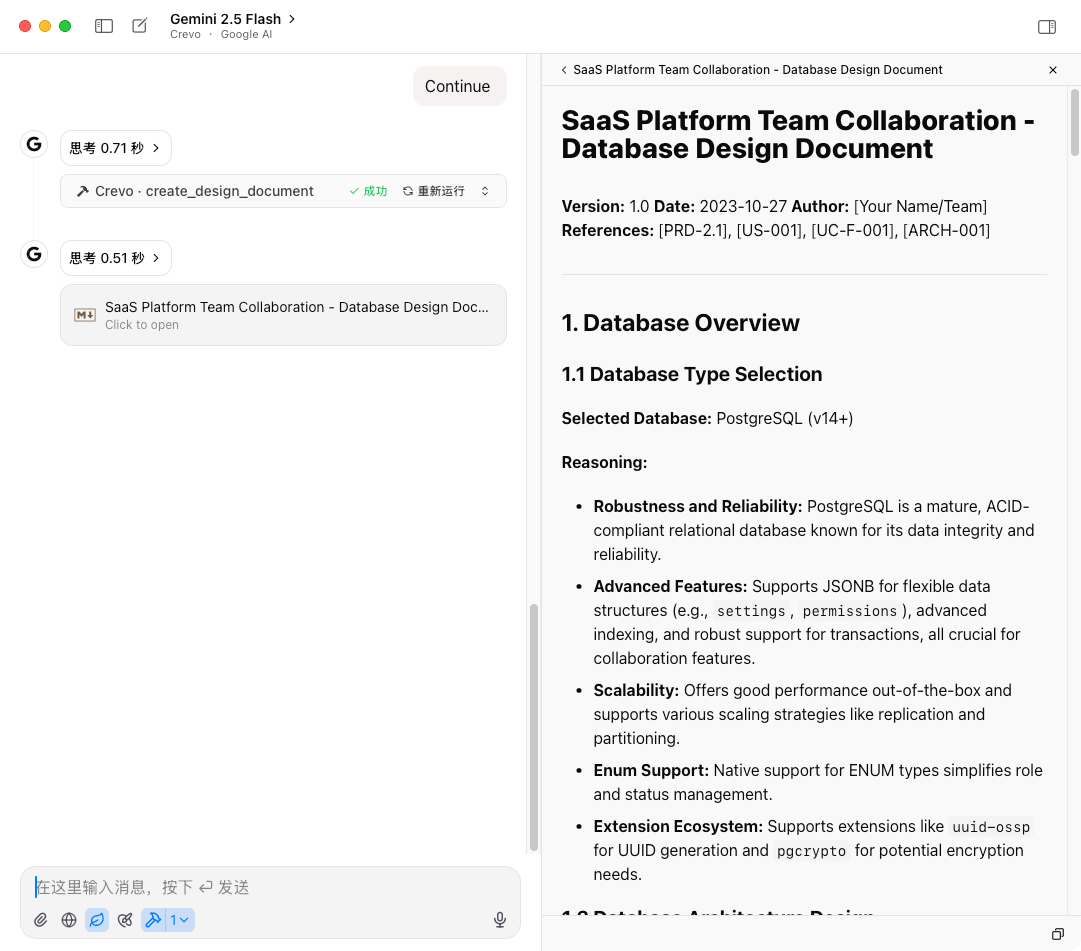
Step 6: Generate the API Design
Crevo automatically generated a RESTful API specification with endpoints, request/response formats, error codes, and auth methods.
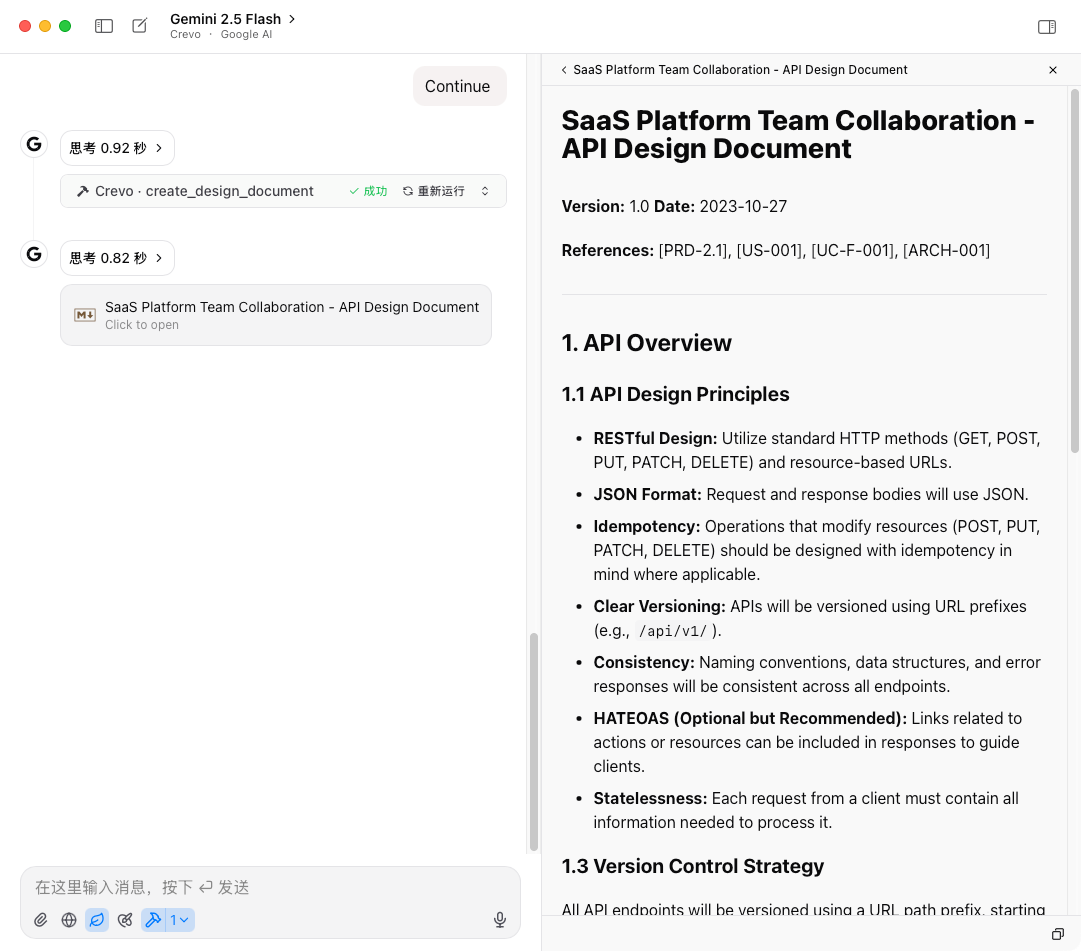
Step 7: Generate the Development Plan
Finally, Crevo produced a detailed development plan with task breakdowns, milestones, and risk assessments.
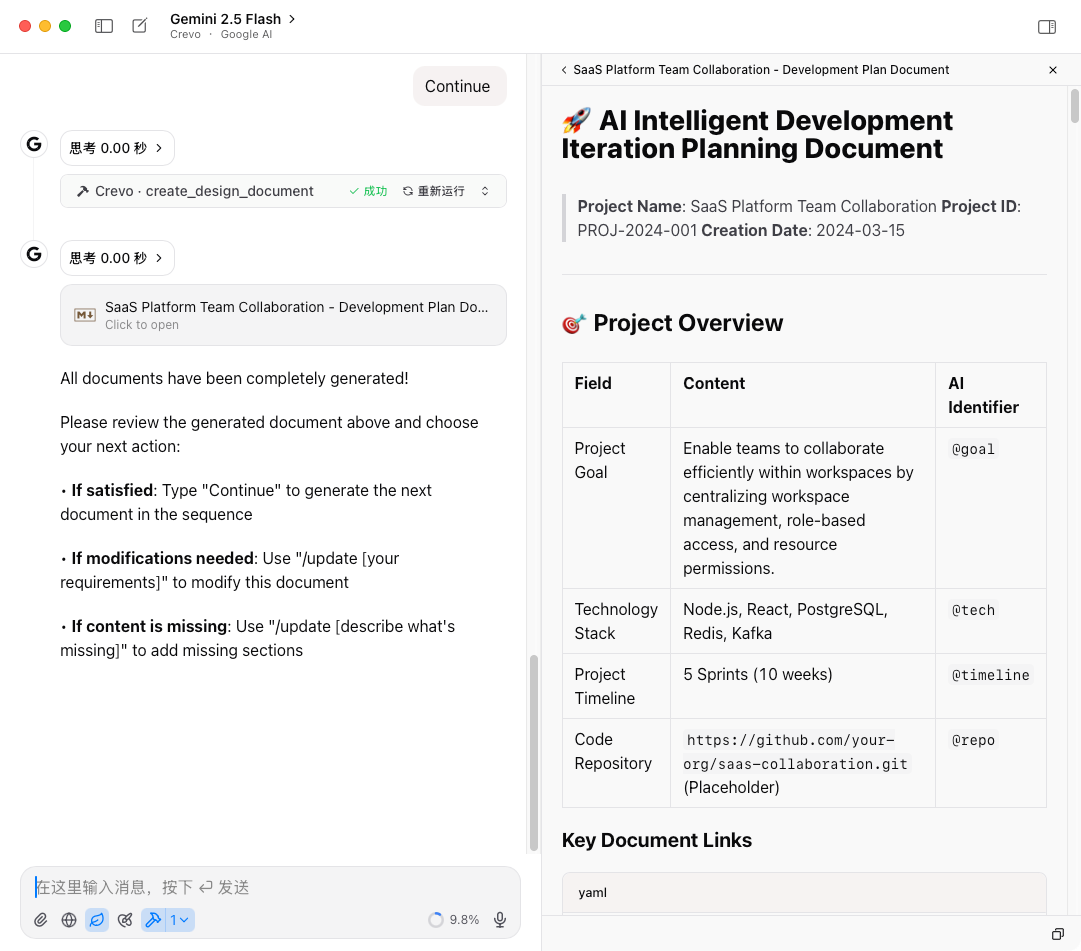
With These 7 Docs, My Development Efficiency Doubled
Once I had this complete set of design documents, my workflow transformed:
- I fed the architecture doc to the AI to generate the code skeleton → The code structure was clean and matched the design.
- I fed the API doc to the AI to generate endpoint implementations → The APIs were standardized, and integration was smooth.
- I fed the database doc to the AI to generate SQL and ORM models → The data model was complete with no missing fields.
- I fed the business process doc to the AI to generate the business logic → Error handling was comprehensive and the logic was sound.
The results:
- ✅ Code quality improved dramatically, with almost no rework needed.
- ✅ Development speed increased by over 3x (because I wasn't constantly making fixes).
- ✅ Team collaboration became seamless; new members could get up to speed just by reading the docs.
- ✅ The project is highly maintainable, with a solid foundation for future iterations.
Crevo's 3 Core Advantages
1. Context-Aware Consistency: It Doesn't Forget
Crevo uses a session-based mechanism where each document generated becomes an input for the next. This solves the "short-term memory" problem of traditional AI tools. Every step builds on the last, ensuring a logically consistent whole.
2. Multi-Model Support: Automatically Picks the Best AI
Crevo has multiple AI models integrated (OpenAI GPT, Claude, Google Gemini, Ollama) and can be configured to use the best model for each document type. You don't have to switch manually; Crevo chooses for you, ensuring high-quality output every time.
3. Seamless Integration with Claude Desktop
Built on the Model Context Protocol (MCP), Crevo can be used directly inside Claude Desktop. Configuration is dead simple—just add one line to your config file:
{
"mcpServers": {
"crevo": {
"url": "[https://crevo-mcp.aurakl.ai/mcp?key=YOUR_MCP_KEY_HERE](https://crevo-mcp.aurakl.ai/mcp?key=YOUR_MCP_KEY_HERE)"
}
}
}
After that, you can generate documents right from your chat, keeping your entire workflow in one place.
Who is Crevo for?
If you're one of the following, Crevo can be a game-changer:
👨💼 Role: Product Manager
- Core Pain Point: Not technical enough to write in-depth technical docs.
- Crevo's Value: Automatically generates architecture, API designs, etc.
👩💻 Role: Tech Architect
- Core Pain Point: Long documentation cycles at the start of a project.
- Crevo's Value: Rapidly generates a full set of design docs.
📊 Role: Project Manager
- Core Pain Point: Lack of standardized document templates.
- Crevo's Value: Provides 7 professional templates to ensure quality.
🧑💻 Role: Indie Developer
- Core Pain Point: Not skilled at writing docs; limited time and energy.
- Crevo's Value: Get pro-level docs at low cost to focus on coding.
👥 Role: Startup Team
- Core Pain Point: No dedicated documentation role; doc quality is inconsistent.
- Crevo's Value: Fills the documentation gap and boosts team collaboration.
Final Thoughts: In the Age of AI, Design Docs Are More Important Than Code
Many people assume that in the age of AI, documentation will disappear because "AI can write the code now."
But my experience has taught me the exact opposite: in the age of AI, design documents are more important than code.
Why?
- Code is the 'how,' but design is the 'why.' An AI can generate implementation, but the architectural principles, business logic, and system boundaries require human thought. Design docs are the crystallization of that thinking.
- Docs are the common language for teamwork. AI won't manage your team. But with clear documentation, team efficiency multiplies.
- Docs are the map for your system. Without a map, you'll get lost in a jungle of code. With one, you always know where you are, where you're going, and how to get there.
So, stop asking an AI to blindly generate code. First, use Crevo to generate your design documents. Then, let the AI generate code on the right track. That is the right way to do AI-assisted development.
Try Crevo Now
🔗 Website: https://crevo.aurakl.ai
📖 Docs: https://crevo.aurakl.ai/docs
💬 Community: Join our Discord

Your point on design docs being more important than code is huge. Now you need space to build Crevo not chase users. Imagine a flow that puts your solution in front of the perfect tech leads and PMs automatically, so you can focus on the product. That's how you get your first real fans. Happy to go for a partnership here :)